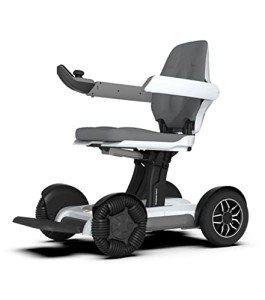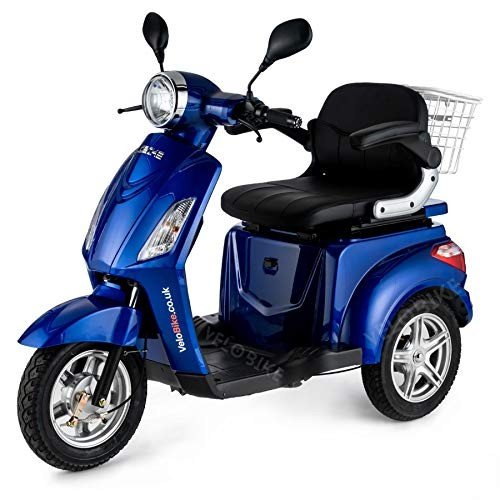HaleOlive
HaleOlive发表的博客
Navigating the World of Mobility Scooters in the UK
Mobility scooters have actually become a necessary tool for numerous in the United Kingdom, providing a practical and dignified option for people with mobility problems. These scooters not only enhance the lifestyle for their users but also offer a sense of self-reliance and freedom. This thorough guide intends to supply an overview of mobility scooters in the UK, including their benefits, types, buying factors to consider, and upkeep ideas.

Introduction to Mobility Scooters
A mobility scooter is a battery-powered lorry developed to assist people with walking problems or limited mobility to move more easily. Unlike manual wheelchairs, which require substantial physical effort, mobility scooters are easy to operate and can be utilized both inside and outdoors. They are especially helpful for older grownups and people with disabilities, allowing them to travel longer distances and navigate different terrains with ease.
Advantages of Mobility Scooters
Independence and Freedom
- Mobility scooters empower users to take a trip individually, decreasing the need for support from others.
- They can be utilized for daily activities such as shopping, going to friends, or attending social events.
Cost-Effective
- While there are initial costs, mobility scooters can be a cost-effective option to other mobility help, specifically over time.
- Numerous models are readily available for lease or lease, supplying flexibility for users with differing needs.
Convenience and Safety
- Scooters are developed with ergonomic seats and adjustable functions to make sure comfort throughout long periods of usage.
- Safety features such as lights, horns, and braking systems boost user self-confidence and security.
Social Inclusion
- By making it possible for people to take part in neighborhood activities, mobility scooters promote social inclusion and decrease feelings of seclusion.
Health Benefits
- Routine usage of a mobility scooter can help maintain physical health by encouraging users to stay active and engaged.
Kinds Of Mobility Scooters
Mobility scooters in the UK can be found in numerous types, each designed to cater to different needs and choices:
Class 2 Scooters (Pavement Scooters)
- Speed: Up to 4 mph
- Use: Designed for usage on pavements and within indoor areas
- Advantages: Compact and lightweight, ideal for brief distances and daily errands
Class 3 Scooters (Road and Pavement Scooters)
- Speed: Up to 8 mph on roads and 4 mph on pavements
- Usage: Suitable for longer journeys and can be utilized on both roadways and pavements
- Benefits: More robust and capable of dealing with different surfaces, consisting of rough surface areas and inclines
Off-Road Scooters
- Speed: Varies, but generally greater than Class 2 and Class 3 scooters
- Usage: Designed for off-road usage, consisting of parks, routes, and unequal surface areas
- Advantages: Enhanced resilience and traction, suitable for daring users
Travel Mobility Scooters
- Speed: Varies, but usually as much as 4 miles per hour
- Use: Portable and simple to take apart for transportation
- Advantages: Perfect for users who take a trip frequently and require a portable service
Buying Considerations
When buying a mobility scooter, numerous factors need to be thought about to make sure the best fit for the user's needs:
User's Physical Condition
- Weight Capacity: Ensure the scooter can support the user's weight.
- Height and Reach: Choose a model that is adjustable to fit the user's height and reach comfortably.
Planned Use
- Indoor/Outdoor: Determine if the scooter will be utilized mainly inside, outdoors, or both.
- Terrain: Consider the type of terrain the user will browse, consisting of any hills or rough surface areas.
Battery Life and Range
- Battery Type: Lithium-ion batteries are typically more effective and longer-lasting than lead-acid batteries.
- Range: Check the scooter's variety to ensure it satisfies the user's day-to-day travel requirements.
Security Features
- Brakes: Look for scooters with reputable braking systems.
- Lights and Horns: Essential for presence and signaling others.
Warranty and Customer Support
- Warranty: Ensure the scooter features a comprehensive warranty.
- Client Support: Choose a trustworthy producer with excellent client service and support.
Upkeep and Safety Tips
Appropriate upkeep is crucial to ensure the longevity and safety of a mobility scooter:
Regular Battery Checks
- Charging: Always keep the battery charged to prevent deep discharge.
- Cleaning: Keep the battery compartment clean and complimentary from dirt and wetness.
Tire Maintenance
- Inflation: Regularly check and maintain appropriate tire pressure.
- Inspection: Inspect tires for wear and damage, replacing them as required.
Tidy and Lubricate
- Cleaning: Wipe down the scooter regularly to keep it devoid of dirt and gunk.
- Lubrication: Lubricate moving parts to prevent rust and make sure smooth operation.
Security Checks
- Brakes: Test the brakes frequently to guarantee they are operating properly.
- Lights and Horns: Check that all security functions are operational.
Follow Manufacturer Guidelines
- Handbook: Refer to the user manual for specific upkeep directions.
- Service: Schedule routine service consult a certified technician.
Often Asked Questions (FAQs)
Can anybody use a Mobility Scooters Uk scooter?
- No, just individuals with a medical need or disability are eligible to use a mobility scooter on public roads and pavements in the UK. Nevertheless, they can be utilized by anybody on personal property.
Do I need a license to drive a mobility scooter?
- No, a license is not needed to utilize a Class 2 or Class 3 mobility scooter. However, users should be over 14 years old and have an authentic requirement for the scooter due to a disability or medical condition.
How fast can a mobility scooter go?
- Class 2 scooters have a maximum speed of 4 mph, while Class 3 scooters can rise to 8 mph on roadways and 4 miles per hour on pavements.
Can I take a mobility scooter on public transportation?
- Some public transportation, such as trains and buses, may enable mobility scooters, however it depends upon the particular service and the size of the scooter. It's best to consult the transport provider beforehand.
What is the life expectancy of a mobility scooter?
- With appropriate upkeep, a mobility scooter can last numerous years, normally in between 5 and 10 years.
Can I get monetary help to buy a mobility scooter?
- Yes, financial help might be readily available through the Disabled Facilities Grant (DFG), local authorities, or charitable companies. In addition, some insurance providers may cover part of the expense.
Mobility scooters are a valuable help for individuals with mobility issues in the UK, using a variety of benefits from increased independence to improved social involvement. By considering the user's needs, the intended usage, and the scooter's functions, one can pick the right design to boost their quality of life. Routine upkeep and adherence to safety standards are important to make sure the scooter remains a trustworthy and safe mode of transport. For those who certify, financial help may be available to make the purchase more economical. Whether for everyday usage or periodic getaways, a mobility scooter can considerably improve the user's ability to browse the world with confidence and ease.
Extra Resources
- Mobility Aids UK: An extensive directory of mobility aids and scooters.
- NHS Choices: Information on mobility aids and financial support.
- Disability Living Allowance (DLA): Guidance on making an application for monetary support for disability-related costs.
By checking out these resources and thinking about the points outlined in this guide, individuals can make an educated choice about purchasing and using a mobility scooter in the UK.

